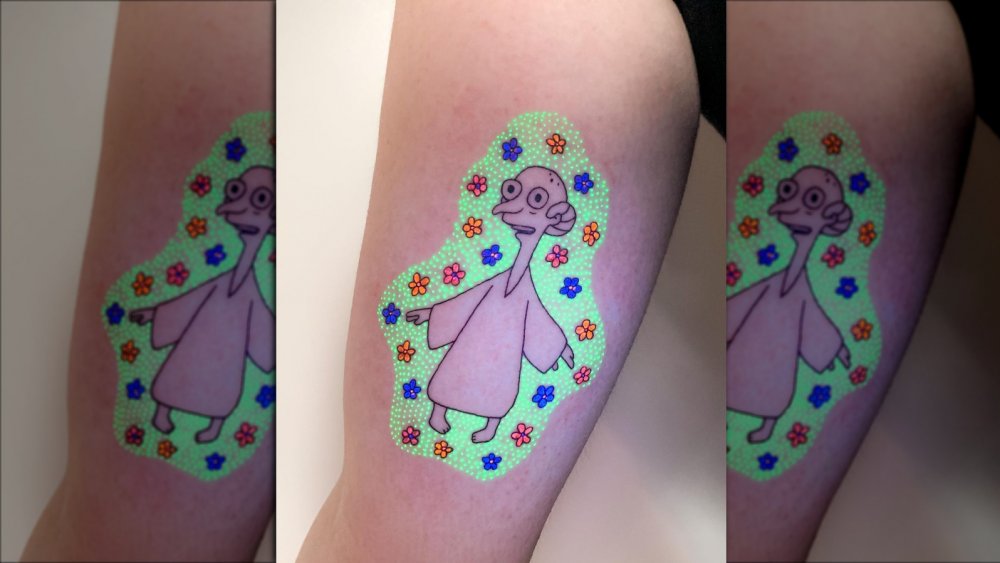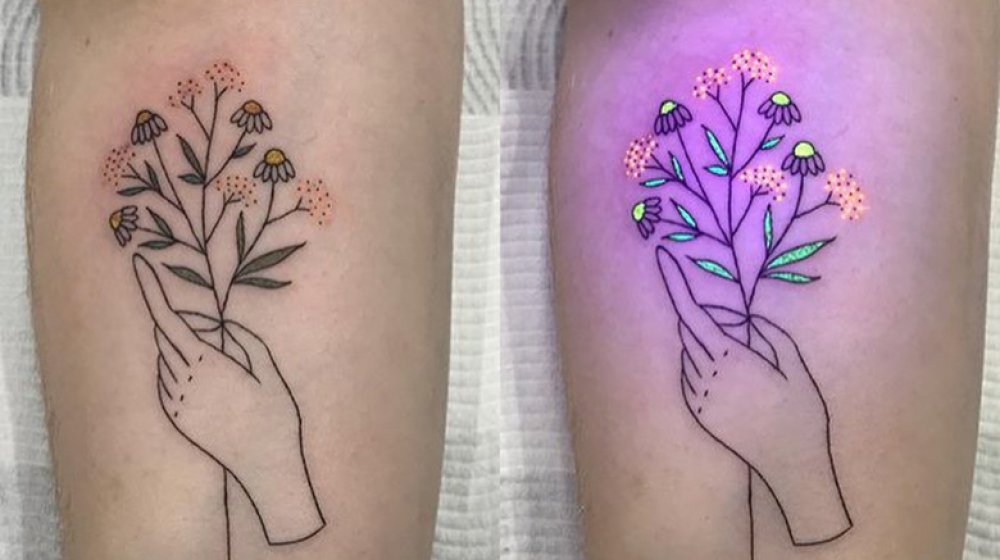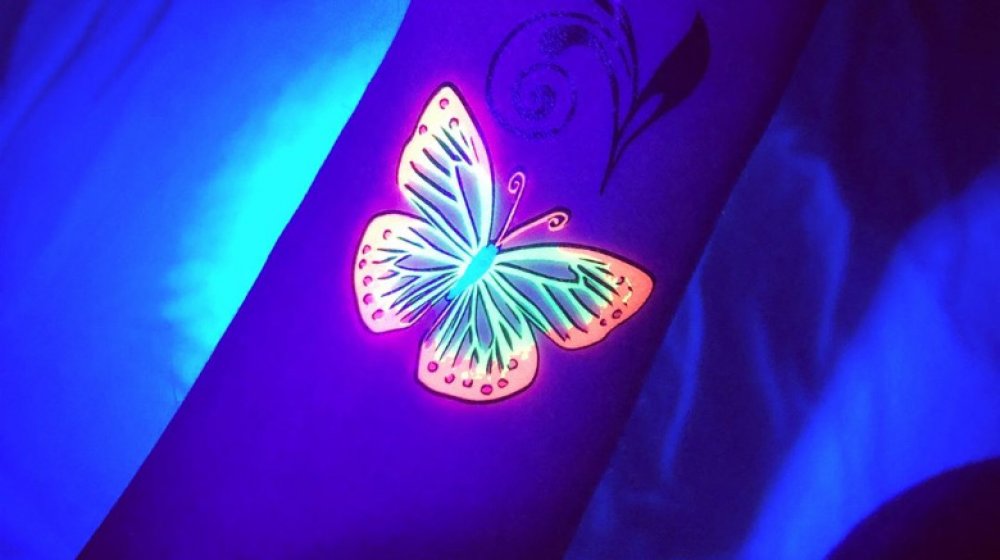What You Should Know Before Getting A Black Light Tattoo
Black light (or glow in the dark) tattoos are the latest body art trend taking Instagram by storm. Like stick and poke and Barbie tattoos, their prevalence on social media doesn't necessarily mean they're the best idea. When done well, black light tattoos are a fun way to put a vibrant, bright spin on a cute, usually simplistic design. However, the first thing to note is that, as the name suggests, these tattoos can't be seen all the time.
In fact, most of them are only visible under a black light so unless you're that one woman Ross dated on Friends, you might only be able to show off how cool your ink is on very special, rave-based occasions. Much like any other kind of trendy tattoo, black light ink is best suited to those who don't want anything too obvious, or if you've got a design that could use a little something extra to make it pop.
What are black light tattoos?
As Allure explains, there's no real difference to the process (or pain) of getting a black light tattoo. However, as tattoo artist Kayla Newell advised, "Any amount of darker ink that seeps into the neon can adversely affect the color permanently, particularly its ability to glow when placed under UV light." Therefore, black has to go in first, followed by whichever colors you've chosen. Byrdie notes black light tattoos trigger a "glow-like reaction" thanks to the UVA light they omit.
It's a relatively new style, which initially became popular during the rise of neon in the nineties. Artists originally used an ink solution containing phosphorus, but it was later deemed unsafe due to the carcinogens. However, as Allure warns, because the FDA doesn't regulate tattoo inks, many shops can still offer "true" glow in the dark tattoos made with phosphorus-infused ink. Reputable artists utilize naturally fluorescent colors to provide bright, attention-grabbing tattoos without the danger.
How long do black light tattoos last?
The healing process and aftercare are basically the same for black light tattoos (healing takes about two weeks, with daily washing and the twice-daily application of a thin layer of vitamin A and D cream a general guide, though it depends on the individual). And, as with regular tattoos, black light ink will last better the better you take care of it. As Newell advises, "Longevity is directly connected to the amount of energy that you put into caring for it properly, like using sunscreen."
Byrdie warns more regular touch-ups may be required, however, because of the brighter pigments. If exposed to too much sunlight, UV-reactive inks may even change color, i.e., blues could turn into yellows or browns over time, so sun exposure is a major concern. With all of that in mind, you're best advised to opt for smaller, less complicated designs if you want to get a black light tattoo. Cute, delicate, hand-drawn styles are typically the go-to for these kinds of tattoos, so the fluorescent element really pops.


